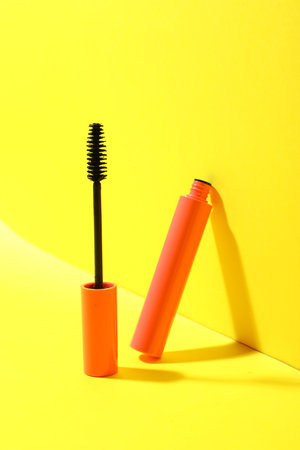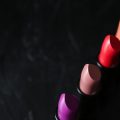Clumping Catastrophes
If you’ve ever looked in the mirror and noticed your lashes sticking together in thick, spidery clusters, you’re not alone. Clumping is one of the most common—and frustrating—mascara mistakes that can instantly derail your beauty game. But why does it happen? The main culprits are usually over-layering, using old or dried-out mascara, and skipping proper lash prep. Pumping your mascara wand introduces air into the tube, drying out the formula faster and making clumps inevitable. Another big offender is applying too many coats before the previous layer dries, causing lashes to stick together instead of fanning out. To avoid these disasters, start by curling clean lashes and wiping excess product off your wand before application. Pro tip: use a lash comb or a clean spoolie immediately after applying mascara to separate any stuck-together lashes for that coveted naturally defined look. With just a few small tweaks to your routine, you’ll leave clumpy catastrophes behind and show off flawless, separated lashes every day.
2. Smudging Snafus
We’ve all been there: You start your day with flawless lashes, but by lunchtime, you’re sporting raccoon eyes. Mascara smudging is a top beauty blunder, and it’s usually triggered by two main culprits—oily eyelids and the wrong mascara formula. If you want your mascara to last from your morning coffee run straight through happy hour, here’s how to tackle those sneaky smudging snafus.
Common Smudging Triggers
| Trigger | Why It Happens | How to Fix It |
|---|---|---|
| Oily Eyelids | Your skin produces oil throughout the day, which can break down mascara and cause it to smear. | Start with an oil-free eye primer or a light dusting of translucent powder on lids before applying mascara. |
| Wrong Formula | Regular mascaras often can’t withstand humidity or natural facial oils, leading to smudging. | Switch to a waterproof or tubing mascara designed to lock in color and resist moisture. |
| Over-Applying Mascara | Too many coats mean more product that can transfer onto skin as it dries. | Stick to two thin coats and let each dry completely before applying the next. |
| Poor Application Technique | Applying mascara too close to the lash line can leave residue on your lids. | Wiggle the wand at the base, then sweep upward, avoiding direct contact with skin. |
Keep Your Lashes Locked All Day
If you’re determined to banish midday mascara meltdown for good, make these tips your new routine: Always prep lids first, opt for long-wearing formulas tailored to your lifestyle, and carry mini blotting papers in your bag for quick touch-ups. With these hacks, your lashes will stay bold and beautiful—from morning meetings to after-work cocktails.

3. Flaky Fallout
Let’s talk about one of the most frustrating mascara mishaps: flaking. You know the drill—you leave the house with lush, dark lashes, only to glance in the mirror later and spot a constellation of tiny black specks under your eyes. Not exactly the fresh look you were going for! So, what gives? Mascara flaking happens when formulas dry out, are over-layered, or simply aren’t suited for your lash type. Sometimes, using an old tube (we’ve all been there) or applying too many coats can also trigger those telltale flakes.
The fix? Start by checking your mascara’s expiration date—most have a shelf life of just three to six months. Next, avoid pumping the wand in and out of the tube, as this introduces air and dries out the product faster. If you love building volume, opt for a formula designed for layering and always let each coat dry before adding another. And here’s a pro tip: dust a little translucent powder under your eyes before application to catch any fallout—then sweep it away for a flawless finish.
With these genius tweaks, you can say goodbye to flaky fallout and hello to smudge-free, all-day gorgeous lashes!
4. Spider Lashes and Heavy Layers
Nothing ruins a flawless makeup look faster than spider lashes—those clumpy, stuck-together lashes that look more like drama gone wrong than Hollywood glam. The culprit? Over-layering mascara or using the wrong technique. But don’t worry; mastering the art of building volume without the weight or web is totally doable with a few pro tips tailored for American beauty lovers.
Why Spider Lashes Happen
The biggest offenders are too many coats, not letting each layer dry, and using a thick, gloopy formula. Sometimes, even mixing old mascara with a fresh one can spell disaster. Spider lashes not only look unnatural but also weigh down your natural curl and make eyes appear smaller—a big no-no when you’re aiming for bold yet beautiful.
The Smart Layering Strategy
| Layering Step | What to Do | Pro Tip |
|---|---|---|
| First Coat | Apply from base to tip in a gentle zig-zag motion. | Wipe off excess product before applying. |
| Second Coat | Wait 30 seconds for the first coat to set, then lightly sweep on another layer. | Focus on outer lashes for a lifted effect. |
| Optional Third Coat | Add only if you crave extra drama—but keep it light! | Use a clean spoolie to separate lashes between coats. |
Avoiding Heavy, Sticky Lashes
If your mascara starts feeling heavy or sticky, it’s time to reassess your product or method. Stick with lightweight, buildable formulas labeled “volumizing” or “lengthening”—these are designed for layering without the clump factor. And remember: less is more! Ditch expired mascaras and never pump the wand (that just introduces air and dries it out).
Quick Fixes for Clumpy Mishaps
If you do end up with spider lashes, don’t panic! Use a lash comb or clean spoolie to gently separate lashes while the mascara is still damp. For stubborn clumps, dip a cotton swab in micellar water and carefully remove excess before reapplying a thin layer. With these savvy moves, you’ll say goodbye to spidery lashes and hello to fluttery perfection every time.
5. Overusing Old Mascara
If you’re guilty of clinging to that favorite tube of mascara until it’s bone dry, you’re not alone—but you could be putting your eyes at risk. Mascara is a breeding ground for bacteria, and using expired product can lead to eye irritation, redness, or even infections like conjunctivitis. The American Academy of Ophthalmology and most pro makeup artists recommend swapping out your mascara every three months—no exceptions! Not only does fresh mascara protect your delicate eye area, but it also performs better: the formula glides on smoothly, doesn’t flake or clump as easily, and gives you that coveted lash lift. Pro tip: If you can’t remember when you opened your mascara, write the date on the tube with a Sharpie. Trust us, your eyes (and your selfies) will thank you.
6. Applying Mascara Wrong
Application Mistakes That Sabotage Your Look
Even the best mascara can’t deliver dreamy lashes if you don’t apply it right. One of the most common mistakes? Using just one motion—like swiping straight up from roots to tips. This technique often leads to uneven product distribution, clumps, and lashes that lack volume or definition.
The Zigzag vs. Straight Swipe Debate
While a quick upward swipe seems easy, mascara artists agree: the zigzag method is your secret weapon. By wiggling the wand side-to-side at the lash base and then sweeping upwards, you coat every lash from root to tip, creating separation and fullness while preventing dreaded clumps.
Pro Tips for Lush, Clump-Free Lashes
- Start at the base: Place the wand as close to your lash line as possible to lift and define from the roots.
- Wiggle, don’t rush: Gently wiggle the brush in a zigzag motion before pulling it through to the ends for an even coat.
- Less is more: Avoid pumping the wand in and out of the tube—this introduces air and dries out your formula faster.
- Layer strategically: Let each coat dry for a few seconds before adding another to build drama without clumping.
Mastering these pro-approved techniques ensures every application delivers bold, beautiful lashes worthy of any occasion. Don’t let basic mistakes hold back your look—instead, elevate your mascara game and enjoy flawless, fluttery results every single time.

